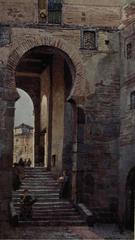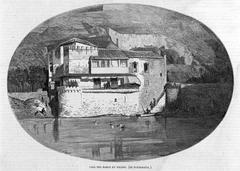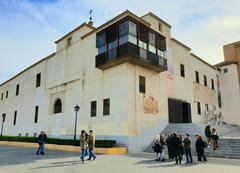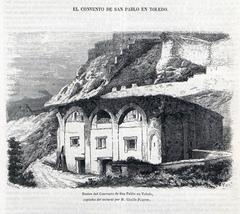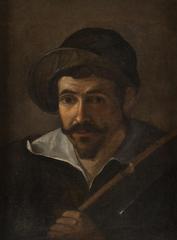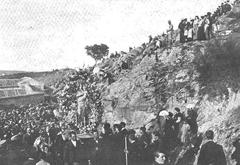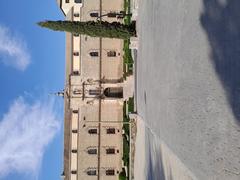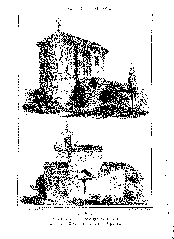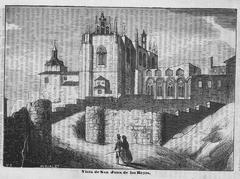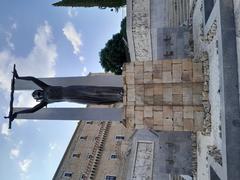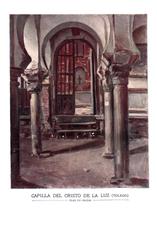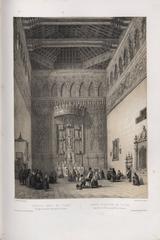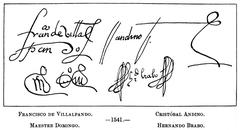Equestrian Statue of Alfonso VI, Toledo, Spain: Visiting Hours, Tickets, and Historical Significance
Date: 14/06/2025
Introduction
The Equestrian Statue of Alfonso VI in Toledo, Spain, stands as an enduring symbol of the city’s medieval history and cultural heritage. Commemorating King Alfonso VI’s pivotal role in the Christian Reconquista—most notably his conquest of Toledo in 1085—the statue is not only a striking work of art but also a testament to Toledo’s transformation into a vibrant center of political power and multicultural coexistence. Set near the Puerta de Bisagra, the statue invites visitors to explore Spain’s rich past and serves as an essential stop for travelers interested in history, art, and architecture.
This comprehensive guide details the statue’s history, significance, visiting hours, accessibility, guided tours, photographic opportunities, and practical travel tips, providing everything you need for a rewarding visit to this landmark within Toledo’s UNESCO World Heritage Site.
For further information, refer to the Official Toledo Tourism Website, Nomads Travel Guide, and GPSmyCity.
About the Equestrian Statue of Alfonso VI
This bronze monument honors Alfonso VI, “El Bravo,” renowned for his decisive role in the Reconquista and as ruler of León, Castile, and Galicia. The statue’s prominent placement near the Puerta de Bisagra and Plaza de Zocodover symbolically reenacts Alfonso’s historic entry into Toledo. It not only celebrates his military triumph but also highlights his leadership and the city’s enduring legacy as a beacon of cultural exchange.
 Alt text: Equestrian Statue of Alfonso VI in Toledo, commemorating the medieval king and the Reconquista.
Alt text: Equestrian Statue of Alfonso VI in Toledo, commemorating the medieval king and the Reconquista.
Location and Access
- Location: Near the Puerta de Bisagra, Toledo, Spain
- Access: The statue is outdoors, accessible 24/7, and free to visit.
- Getting There: Toledo is about 70 km south of Madrid, easily reached by AVE high-speed train from Madrid’s Atocha station (30 minutes). From the train station, it’s a 20-minute uphill walk or a short taxi ride to the statue (Nomads Travel Guide).
- Parking: Public lots are located outside the old city walls; accessible taxis and public buses are also available.
The statue’s placement at the main city gate emphasizes its symbolic significance and offers a scenic introduction to Toledo’s historic center (viajeraymochilero.com).
Artistic Description and Symbolism
Material and Style:
The statue is crafted in bronze and mounted on a robust stone pedestal. Alfonso VI is depicted in full medieval regalia, including crown, armor, and sword, astride a powerful horse in mid-stride—an image of leadership and resolve.
Artistic Impact:
The larger-than-life monument blends historical accuracy with idealized realism, echoing the late 19th- and early 20th-century tradition of public monuments that celebrate national identity.
Symbolic Significance:
- Commemoration of the Reconquista: The statue honors Alfonso VI’s role in reclaiming Toledo, a turning point in Christian Spain’s resurgence (nobility.org).
- Representation of Authority: As with other equestrian statues, it reinforces Alfonso VI’s status as a military leader and sovereign.
- Connection to Local Identity: The monument is a source of civic pride and often a backdrop for public events.
Visiting Hours and Tickets
- Statue: Accessible 24/7, no tickets required.
- Nearby Attractions:
- Toledo Cathedral: 10:00 AM – 6:30 PM, ~€10
- Alcázar of Toledo: 10:00 AM – 5:00 PM, ~€5
- Recommendation: Purchase tickets online for major attractions during peak seasons (Toledo Cathedral Official Site).
Guided Tours and Special Events
Local tour companies offer historical walking tours that include the Equestrian Statue of Alfonso VI as a key highlight. These provide valuable insights into Alfonso VI’s legacy and the Reconquista. The statue also features in citywide events such as Corpus Christi and medieval fairs, often serving as a gathering point for parades and reenactments (GPSmyCity).
- Booking: Tours can be arranged through the Official Toledo Tourism Website.
- Languages: Guided tours and interpretive signage are available in several languages.
Best Times and Photo Opportunities
- Golden Hour: Early morning and late afternoon offer the best lighting for photography.
- Vantage Points: The steps around Plaza de Zocodover and the area near Puerta de Bisagra provide excellent perspectives.
- Evening: The statue is beautifully illuminated at night, offering dramatic photo opportunities.
Accessibility
- Plaza and Pathways: The area around the statue is wheelchair accessible with smooth pavements.
- Historic Streets: Some nearby areas may have cobblestones and gradients—wear sturdy shoes and plan accordingly (PlanetWare).
- Amenities: Public restrooms, cafes, and parking are available nearby. Accessible taxis and some tours cater to visitors with mobility needs (Toledo Travel Guide).
Nearby Attractions
- Puerta de Bisagra: Renaissance gate marking the main entrance to the old city.
- Alcázar of Toledo: Historic fortress and museum, 10-minute walk.
- Plaza de Zocodover: Lively main square with shops and cafes.
- Toledo Cathedral: Masterpiece of Gothic architecture.
- Museo de El Greco: Museum dedicated to the iconic painter in the Jewish Quarter (The Geographical Cure).
Practical Tips for Visitors
- Climate: Spring (April–June) and autumn (September–November) offer the best weather.
- Dress Code: Wear comfortable shoes for exploring cobbled streets.
- Safety: Toledo is generally safe; keep an eye on belongings in busy areas. Emergency number: 112 (Spain Info).
- Currency: Euro (€); credit cards widely accepted.
- Language: Spanish is official; English is common in tourist centers.
- Toledo Bracelet Card: Purchase for combined entry to several attractions (The Geographical Cure).
Sustainability and Responsible Tourism
- Use public transport or walk to reduce your carbon footprint.
- Support local businesses and artisans.
- Dispose of litter responsibly and respect the monument’s integrity (Spain Info).
Frequently Asked Questions (FAQ)
Q: What are the visiting hours for the Equestrian Statue of Alfonso VI?
A: The statue is accessible 24/7 with no restrictions.
Q: Is there an entrance fee?
A: No, visiting the statue is free.
Q: Are guided tours available?
A: Yes, many walking tours in Toledo include the statue.
Q: Is the area accessible to visitors with disabilities?
A: The plaza is accessible, though nearby streets may be challenging for some.
Q: What is the best time to visit?
A: Early mornings and evenings offer comfortable weather and fewer crowds.
Conclusion and Recommendations
The Equestrian Statue of Alfonso VI offers a unique window into Toledo’s storied past and Spain’s broader Reconquista narrative. With free, all-day access and a prime location near top attractions, the monument is a highlight for any visitor. For deeper insights, consider a guided tour, and plan your trip during the milder spring or autumn months. Download the Audiala app for maps, audio tours, and up-to-date information, and explore more of Toledo’s fascinating sites.
References and Further Reading
- Equestrian Statue of Alfonso VI - EquestrianStatue.org
- The Cid and King Don Alfonso VI of León and Castile Conquer Toledo - Nobility.org
- Toledo Tourism Official Website
- Toledo Cathedral Official Site
- GPSmyCity: Toledo’s Ancient Walls, Gates, and Bridges
- Nomads Travel Guide: Toledo
- UponArriving: Visiting Toledo, Spain
- Toledo Spain Click: 12 Monuments Not to Be Missed in Toledo
- Spain Info: Official Tourism Website of Spain
- PlanetWare: Toledo Tourist Attractions
- The Geographical Cure
- Toledo Travel Guide
